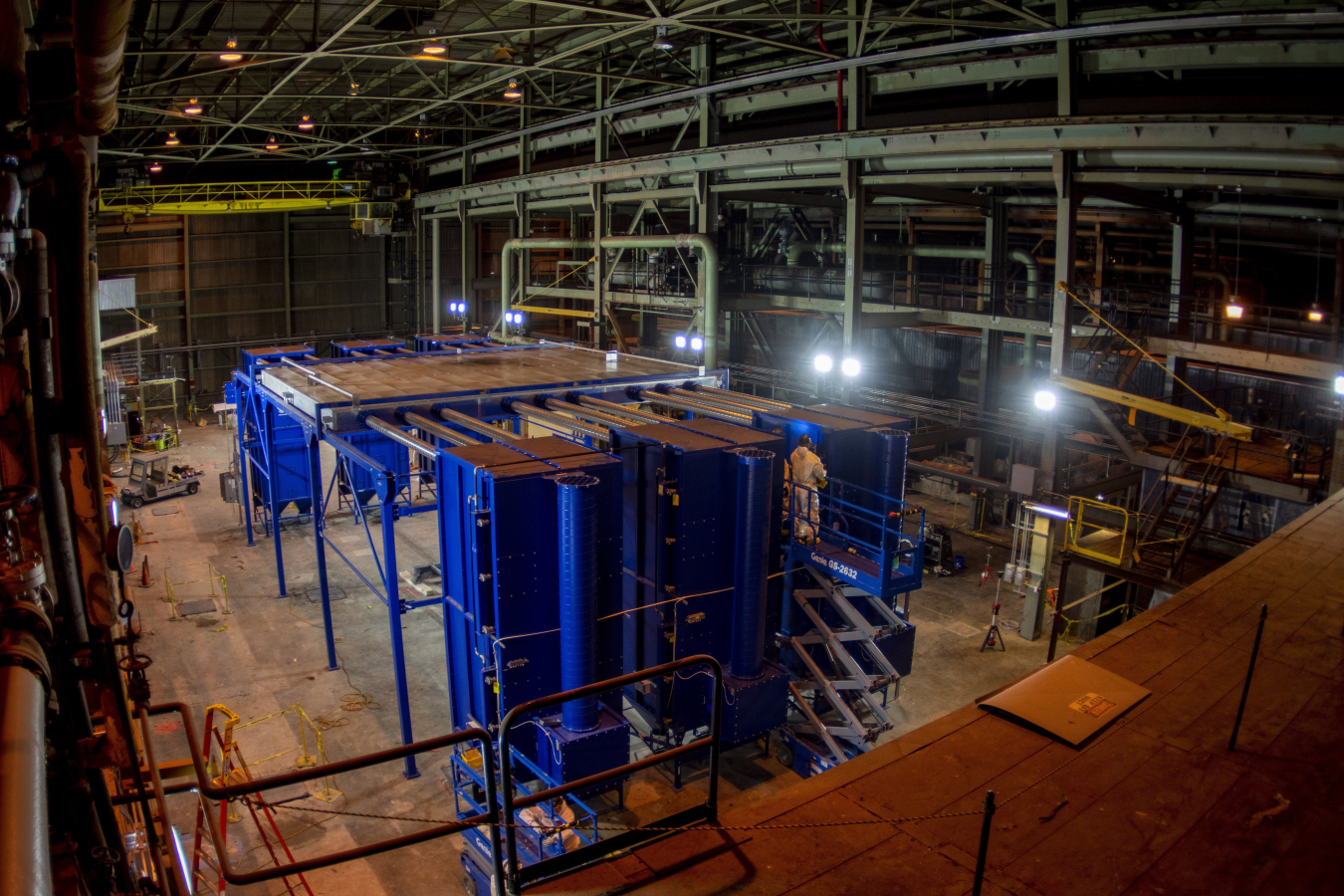Last month, crews at EM’s Paducah Site reached a significant deactivation milestone, starting converter segmentation at the C-333 Process Building, one of four massive process buildings slated to be demolished during the site’s environmental cleanup.
Office of Environmental Management
January 9, 2024
PADUCAH, Ky. — How do you prepare to demolish a 1-million-square-foot facility?
One piece at a time.
Last month, crews at EM’s Paducah Site reached a significant deactivation milestone, starting converter segmentation at the C-333 Process Building, one of four massive process buildings slated to be demolished during the site’s environmental cleanup.
During deactivation of the C-333 Process Building, more than 500 pieces of large process gas equipment, called converters, are removed to prepare for building demolition. Weighing upwards of 70,000 pounds, the converters are carefully removed from the former uranium enrichment system to be downsized in a space specifically constructed to do the work safely, called the Material-Sizing Area.
Construction of that area began almost a year ago with the clearing of an area the size of a football field in the C-333 Process Building. The clearing included removal of process gas equipment, housings and concrete pedestals, and installation of new electrical and compressed air utilities.
“DOE’s environmental cleanup at Paducah is key to a new future for the site, and D&D is the linchpin for moving forward,” Portsmouth/Paducah Project Office Manager Joel Bradburne said of decontamination and decommissioning work at the site. “Deactivation of the C-333 Process Building begins a logical progression towards a final cleanup strategy.”
Workforce safety has been the top priority through all phases of this work. Lessons learned and knowledge transfer from similar operations at EM’s Portsmouth Site led to the design of a dust collection system used when cutting converter shells. Worker feedback from both Paducah and Portsmouth have led to several modifications addressing the challenges in working with these large pieces of equipment.
“Nearly every member of the Four Rivers Nuclear Partnership (FRNP) team was involved in all facets of this project,” said Myrna Redfield, program manager for FRNP, EM’s Paducah Site deactivation and remediation contractor. “The crew performing the segmentation of the converters are trained and prepared to take on this massive effort.”
-Contributor: Dylan Nichols
To receive the latest news and updates about the Office of Environment Management, submit your e-mail address.

